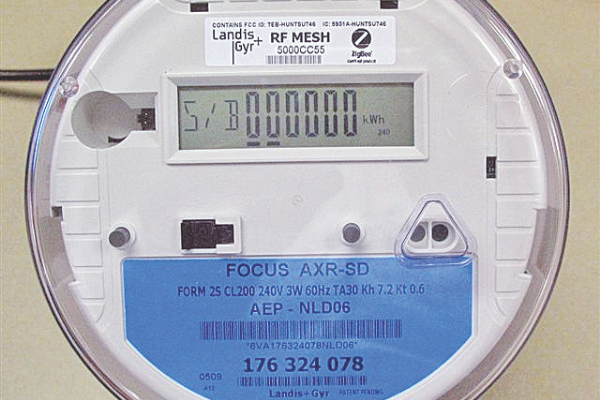PSO, CENTERPOINT
OKLAHOMA CITY – Public utilities such as Public Service Co. of Oklahoma (PSO) and CenterPoint Energy are asking regulators for prolonged payout periods for the millions of dollars they expect their customers to pay for extraordinarily high fuel bills incurred in last month’s winter freeze.
Although PSO has not compiled the final tally of expenses from last month’s winter storm, company officials said preliminary estimates are “about $825 million.”
In comparison, annual final costs typically are in the range of $550 million to $600 million, said Stan Whiteford, region communications manager for PSO, a subsidiary of American Electric Power (AEP).
“I hesitated using any number at all because it is likely to change once all the reviews and auditing of the numbers have taken place,” Whiteford said.
Also, state and federal officials “have indicated an interest in lessening the amount ultimately paid by customers. So there could be solutions coming from that arena, as well. We appreciate their focus on this and look forward to working together in the process, recognizing those impacts are also unknown.”
What is known, Whiteford said, is that the costs associated with the winter storm “will be sharply higher than we have ever experienced, and using standard recovery processes would have an unacceptable effect on our customers.”
Between Feb. 9 and Feb. 20, PSO spent $175 million on natural gas expenses and $650 million on electricity purchases from other entities, for an estimated total of $825 million, PSO’s parent AEP disclosed on page 418 of a filing with the U.S. Securities and Exchange Commission (SEC) last month.
PSO’s recent rate filing with the utility-regulating Oklahoma Corporation Commission is “intended to extend the period of time the costs are recovered from customers, to prevent extreme increases on customer bills,” Whiteford said.
The recovery period has not been established yet, Whiteford said Monday, noting that PSO’s application to the Corporation Commission requests only “a reasonable amortization period after the costs are known to PSO, and a mechanism to recover the costs” over an as yet indeterminate period of time.
PSO serves more than 562,000 customer accounts in eastern and southwestern Oklahoma. It provides electricity to more than three dozen cities and towns in southwest Oklahoma, including Lawton, Altus, Duncan, Apache, Cache, Carnegie, Cement, Chickasha, Cyril, Davidson, Elgin, Fletcher, Fort Cobb, Gould, Grandfield, Hobart, Hollis, Manitou, Martha, Roosevelt, Rush Springs, Snyder, Sterling, Temple, Terral, Tipton and Waurika.
CENTERPOINT’S FEB. GAS BILL EXCEEDED PLAN BY $2.5 BILLION
According to The Frontier, a nonprofit source of news, CenterPoint Energy also filed an emergency application with the Corporation Commission, asking it to waive rules that require customers to pay full pass-through costs of natural gas and defer other costs in billing.
In a filing with the SEC the week of Feb. 22-26, CenterPoint Energy revealed on page 30 that because of “extraordinary increases in the price of natural gas” the company’s estimated fuel purchase costs for February exceeded corporate plans by $2.5 billion.
CenterPoint served almost 100,000 residential, commercial, industrial and transportation customers in western and southeastern Oklahoma as of Dec. 31, 2020.
Cities and towns in southwest Oklahoma that are supplied with natural gas by CenterPoint include Altus, Apache, Arapaho, Blair, Burns Flat, Chickasha, Comanche, Duke, Duncan, Elgin, Fletcher, Lawton, Mangum, Marlow, Martha, Ninnekah, Olustee, Pocasset, Sterling and Temple.
The Associated Press reported on Feb. 20 that exorbitant price spikes were recorded in the spot market.
For example, natural gas hit a record $600 per million British thermal units in Oklahoma.
In Winfield, Kan., the city manager reported that a unit of natural gas that sold for about $3 earlier in the month sold for more than $400 on Feb. 18. City Manager Taggart Wall told a Wichita television reporter that Winfield, which budgets about $1.5 million a year for natural gas, expects to pay about $10 million just for the previous week.
Officials in Morton, Ill., reported that gas normally sold for about $3 per unit, but cost nearly $225 the week of Feb. 14-20 as demand soared because of the deep freeze.
A spokesman for the American Gas Association, which represents more than 200 local energy companies, said Feb. 14 and 15 set a record for the largest natural gas demand in U.S. history over a two-day period.
NGI (Natural Gas Intelligence) reported that in the Midwestern U.S., 81 billion cubic feet of natural gas were withdrawn from storage during the five days of subfreezing temperatures. To put that in perspective: a billion cubic feet of natural gas is enough to meet the needs of approximately 10,000 to 11,000 American homes for a year.
PSO REQUESTS COST RECOVERY MECHANISM
PSO filed an application with the commission on Feb. 24 for creation of a “temporary cost recovery mechanism” to compensate the electric utility for the “increased costs caused by the extreme winter weather” last month.
In that document PSO noted that Brandy Wreath, director of the commission’s Public Utility Division and Consumer Services, pointed to “issues that impacted Oklahoma utilities and customers as a result of ‘the unprecedented winter storm that hit the region’.” Issues he listed included:
• shortages of natural gas;
• reduced pressure and flow in natural gas transport systems due to low supply and freeze-off;
• production sites freezing off or unable to get natural gas onto the system “due to freeze-off/blockage”;
• wind generation significantly reduced because of freezing temperatures;
• natural gas generation experiencing supply issues;
• the Southwest Power Pool experiencing power shortages across its system. (The SPP power region includes all of Kansas and Oklahoma, and portions of Arkansas, New Mexico, Texas, Louisiana, Missouri, South Dakota, North Dakota, Montana, Minnesota, Iowa, Wyoming, and Nebraska.)
• significant increase in spot market prices for natural gas.
Natural gas is the largest fuel source for power generated in Oklahoma, producing nearly half of all electricity generated, according to The Frontier.


